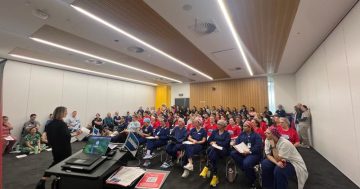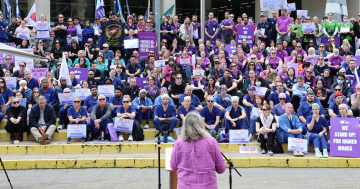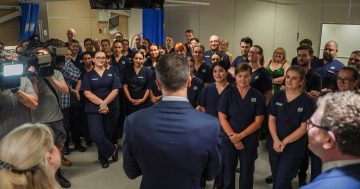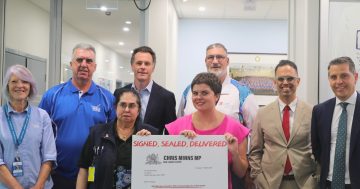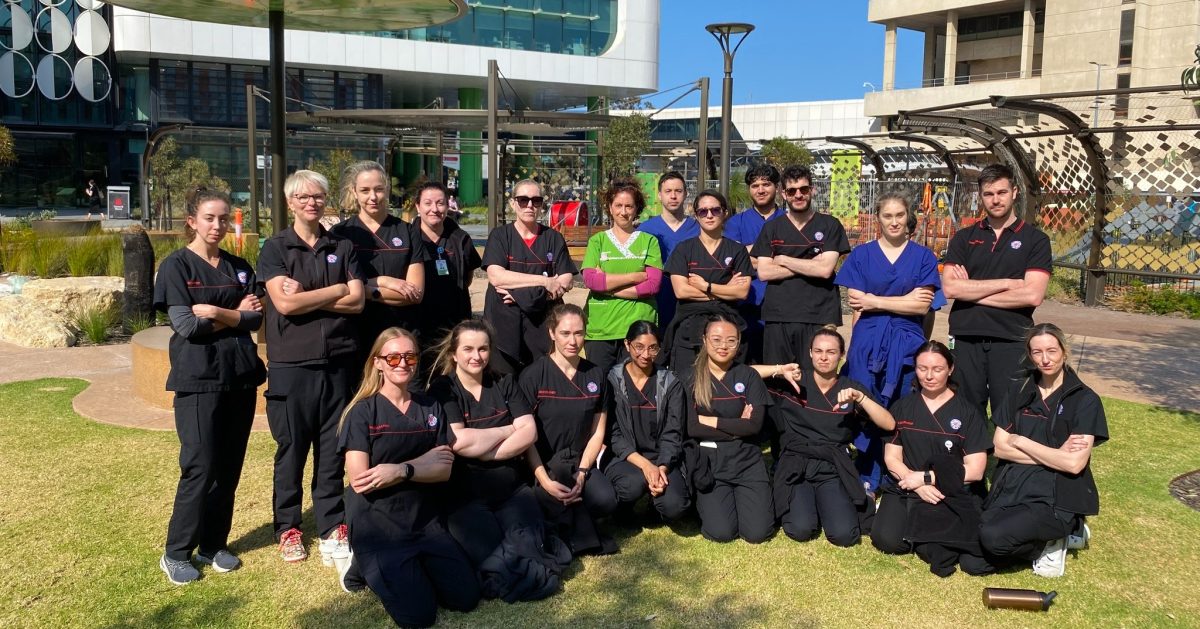
HSUWA members at every public hospital across the state held a one-hour work stoppage late last month as part of their call for a better third wages offer. Photo: HSUWA.
Western Australia’s Health Services Union (HSUWA) is demanding the State Government make “a fair, respectful third offer” following the release of its strategy that “lays out the exact issues and the need for reform our members have been fighting to get”.
At the beginning of the year, union members submitted 20 claims that focused on improving workforce retention. More than 2220 members wrote to Premier Roger Cook in July, asking him to intervene and ensure they receive a “serious” second offer, which they also rejected last month.
Most recently, the union cancelled its planned mass protest rally on 8 October at Dumas House, a government office in Perth. According to a comment on HSUWA’s Facebook event page, members were sent an email update confirming the rally had been cancelled, with more information and the next steps.
“The Cook Government has resorted to underhand tactics rather than respond appropriately to HSUWA member claims for better pay and conditions to retain valuable and experienced workers in WA public health,” the HSUWA comment read.
Near the end of last month, Health Minister Amber-Jade Sanderson finally released the WA Health Workforce Strategy.
The HSUWA claims it was “no surprise” the government released it quietly despite being several years in the making as “it lays out the exact issues and the need for reform our members have been fighting to get WA Health to engage with”.
“The language in the Minister’s foreword could very well have been pulled from the correspondence our members continue to send WA Health and the Minister in the hope of securing a fair third offer – the need to “care for an investment in building the capacity of capability of current staff” and “attract and retain future staff” to ensure WA Health have the skills and expertise needed to meet the demand for health services,” the union’s statement read.
“Despite significant mention of the need for greater professional development throughout the strategy, our members’ request for the introduction of professional development leave and support for the technical and administrative workforce continues to be knocked back by Health.
“In addition, all the experienced professionals in allied health and the health sciences are still unable to access any allowance to support their required professional development.”
Throughout September, the medical imaging technologist workforce has been walking off the job at every public hospital across the state. According to the union, patients have been waiting days for critical scans because WA Health does not have the staff or equipment to serve the number of public health patients it is expected to assist.
“Strategies are important, and this workforce strategy would be very helpful if it really was intended to provide the foundations for change,” the union said.
“We would expect a 180-degree turnaround in their approach to HSUWA members’ claims if they truly believe in what they have said in the strategy.”
Amid the furore, Minister Sanderson announced that WA Health had begun a new staffing model at two Perth hospitals. It follows the successful rollout of similar ratios at Perth Children’s Hospital emergency department.
Sir Charles Gairdner and Osborne Park hospitals have taken on nurse and midwife-to-patient staffing ratios, which are expected to benefit their medical and surgical wards.
The North Metropolitan Health Service ratios for medical and surgical wards are, at a minimum, one nurse to every four patients during the day and one nurse to every seven patients at night.
Minister Sanderson said it came as part of the state’s commitment to replace nursing hours per patient day by introducing nurse and midwife-to-patient ratios in all WA hospitals.
“Research has shown that the ratio of nurses and midwives relative to the number of patients is an important factor when considering patients’ experience and outcomes,” she said.
“This model will deliver improved workloads, greater transparency on staffing levels, improved staff retention and satisfaction, and workforce sustainability.”





